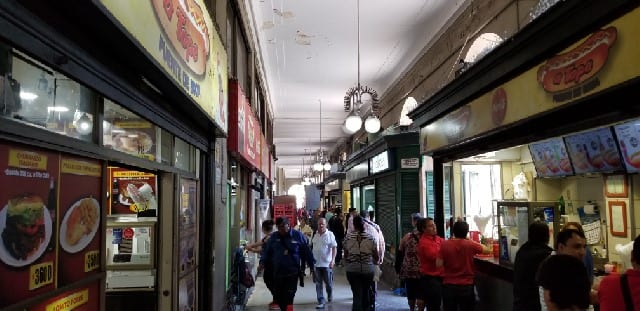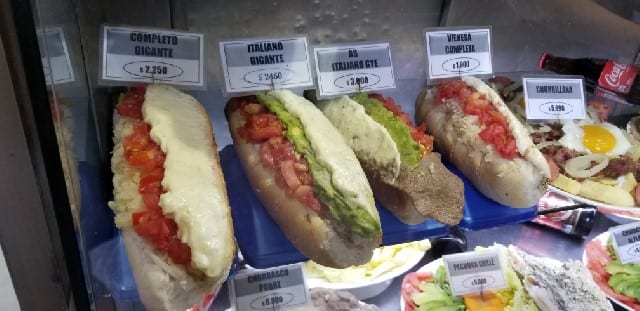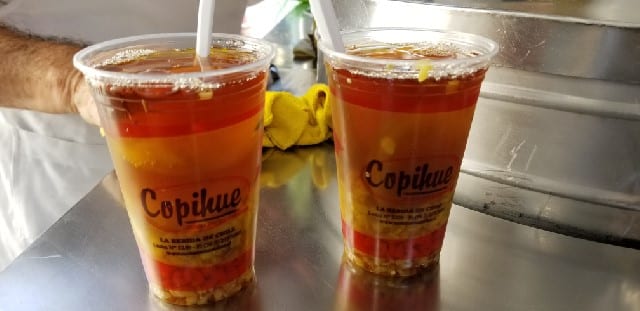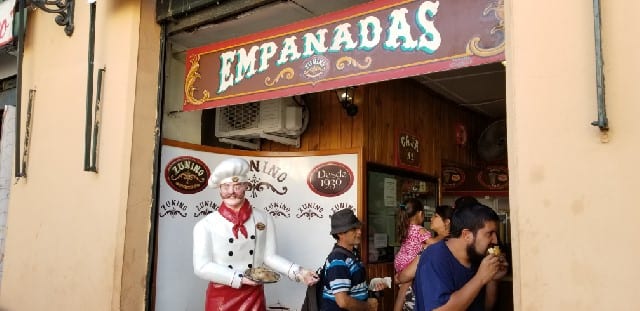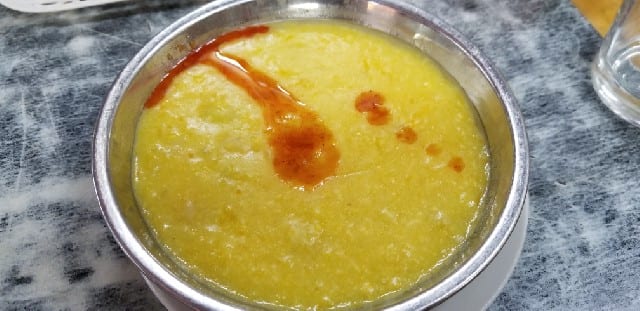
19 Apr Getting to know Santiago, Chile Through a Food Tour with FoodyChile
If you have only one day in Santiago, what is the best way to see it? A food tour where you walk through the city, visiting markets, restaurants, street vendors and get an introduction to the culinary culture of Chile. After all, food is something that we all share. It is a way to look at the world. Food is a way to get to know another culture.
Our guide was Colin Bennett, an American who lives in Santiago. Originally from the mid-west, Colin came to Chile to teach English and ended up staying. About eight years ago, Colin started FoodyChile.
We met in the Plaza de Armas in the center of the city. A map lies in the ground in the center of the plaza showing the now dry Rio Ma Pocho that runs through the city of Santiago. Colin explained Chile’s history to us, from the indigenous Ma Pocho who gathered foods like shellfish, pinenuts, beans and mushrooms to ingredients brought to Chile by the Spanish.
We began walking and soon was in Portal Fernandez Concha. A hotel in the 1860’s, today the promenade is filled with a row of hot dog vendors. The Chilean hot dog, with lots of toppings, is Chile’s own national junk food.
This shape looks like an American hot dog but the size is much bigger. It is all about abundance.
As for the types of hot dogs, there is a level of standardization when it comes to condiments.
Completo – You will hear Chilean’s say, “let’s go for a completo.” A completo is a specific recipe and includes sauerkraut, tomato and mayonnaise.
Italiano – Called Italiano as it is the color of the Italian flag, it is topped with guacamole, tomato and mayonnaise.
AS – AS means any meat, not a hot dog, in a bun and toppings can be “completo” or “italiano”.
Churrasco is a sandwich with thinly cut beef.
Lomita is a pork loin and you can get it “completo” or “italiano”
Gorda is a sausage
Chorrillana is dry poutine with meat, hot dog, onions and a fried egg.
Chacarero is vegetables with meat but no mayonnaise.
Churrasco pobre is a plate of meat, fries, onions and a fried egg.
Once we left Portal Fernandez Concha, we wandered down the street. On the street corners, vendors sell Mote Con Huesillo (huesillo means “little bone”). Juice comes from dehydrated peaches that have been rehydrated and little pieces of a grain/wheat base are in the cup, along with the peach halves. You can both eat and drink this tasty and refreshing snack that is not too sweet.
We then headed to Emporio Zunino, one of the oldest and most famous empanada spots in Santiago.
The classic is called Pino and is filled with meat, onion, hard-boiled egg, paprika and pitted olives. It is liquidy and quite yummy.
We took a quick stroll through the flower market, Purgala des Flores.
And then spent some time walking through Vega Central, the non-touristy local market located on the north side of Rio Ma Pocho, that was established in 1910.
Some of the more unique products we saw were cochayuyo. Cochayuyo is sea kelp. It is used in soups and stews and as a medicated teething ring for babies.
Merkev is a spicy and smoky spice made with grilled goat horn pepper, toasted coriander seeds and salt.
We stopped at one of the restaurants in Vega Central to try two local dishes.
Porotos Granado is made with cranberry beans, corn mash (mazza morra), squash, garlic and paprika and is quite tasty.
Ajiaco is a casuela made with left-over off-the-bone meat, pumpkin and potato.
After lunch, we stopped for a Cola de Mono, a classic Christmas-time drink made with coffee, milk, aguadente and cinnamon. At Quinto Patio, a family-owned bar since 1951, they serve their family recipe of Cola de Mono year round!
Our next stop was to another bar, La Piojera, which means lice. A true dive bar with live music, they are famous for their drink called the terrimoto (earthquake).
The terrimoto is made with pipeno, a fermented grape juice made from basic grapes and filtered, Fernet Branca and a scoop of pineapple ice cream. They say that the terrimoto/earthquake is so powerful, it will rock your world.
As Chile is the largest consumer per capita of ice cream in South America, our last stop of the day was at the original location of the now franchised Emporio La Rosa for some ice cream.
After a day wandering around Santiago, eating and drinking, I felt like I had a good sense of the culinary culture of Chile. Plus, we had a great time!
If you are heading to Chile, check out a food tour by FoodyChile. They also offer wine tours and overnight tours.
Discover more from Please The Palate
Subscribe to get the latest posts sent to your email.




